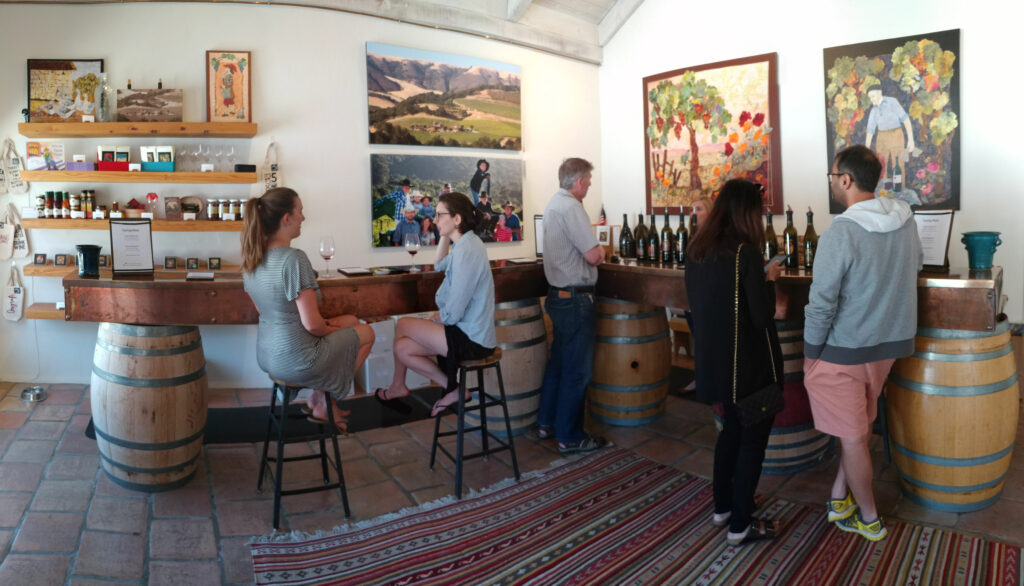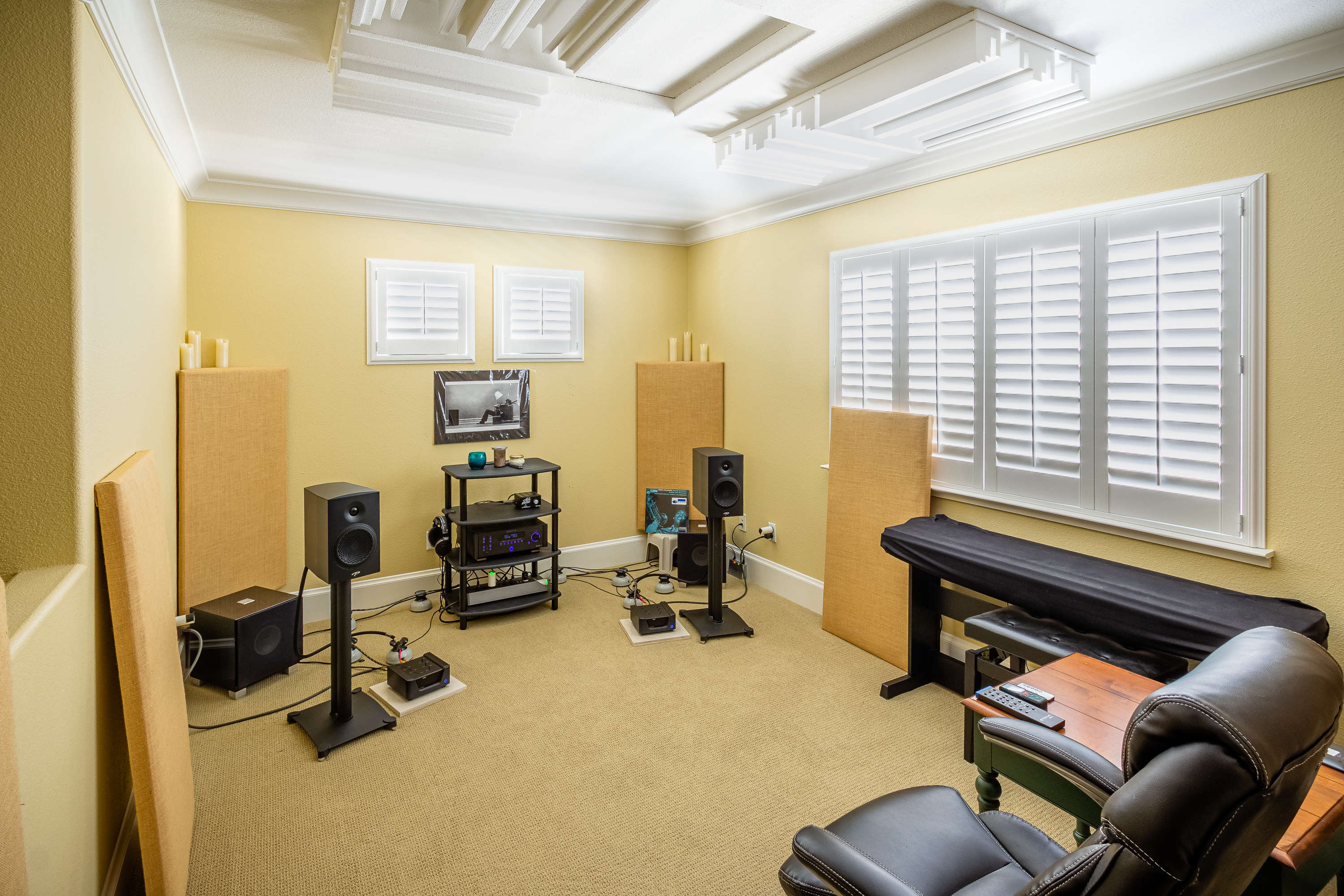Now that virtually all of the United States has “reopened” after many months of COVID-19 lockdowns, audiophiles and music lovers are gradually resuming the practice of visiting each other’s homes to celebrate their shared passion for fine music playback. Movement restrictions reduced our spending on dining and travel and increased time spent at home. As a result, many of us have wholly or partially reworked our systems and listening environments. We are eager to share the fruits of our labors, but before organizing that next system hop event, let’s talk about how to optimize the experience, both for hosts and guests.
Experienced audio enthusiasts know that hearing deeply into the mix is a skill that takes time to develop. You’ve likely spent hundreds of hours in the sweetspot of your own system, and over that time, your brain has become highly adept at processing what you hear. However, when you take the helm in an unfamiliar room, this processing matrix does not translate. Give yourself time to become acclimated. You’ll never get there by starting out with critical listening; as Paul McGowan says, you have to “settle in and relax.” Resist the temptation to form an early opinion, even if pressed for feedback by your host.
It’s been too long since my wife and I have been in the tasting rooms of our favorite wineries, but we always enjoy the experience of a guided tasting. The host usually suggests starting with light-body, dry white wines, like Pinot Grigio or Riesling, progressing through Viognier and Chardonnay to Rosé before transitioning to the reds.…again beginning with light-body grapes like Pinot Noir and Sangiovese. By the end of the tasting, we’re enjoying rich, complex, and possibly older vintages of Merlot, Zinfandel, and Cabernet Sauvignon. Before each pour, the host offers tasting notes to guide our nose/pallet/brain processing, helping us know what to look for. Some tastings will finish with an excellent fortified or dessert wine and most offer complimentary lite bites along the way. Guests are usually welcome to customize the experience and revisit favorites.

What does this have to do with audio? As the host of a listening session, I suggest that you help your guests relax by offering them a guided listening experience. Spend just a few minutes walking them through the composition of your system and setup process. Make them comfortable in the sweetspot. (If they are of age, a glass of wine usually helps!) Offer your take on the room’s strengths and advice on hearing past any weaknesses before starting with an introductory track.
For example, the back left-hand side of my Loft is open to the floor below while the right side is enclosed. I explain that it can take a few minutes to wrap one’s head around the acoustics, but once sorted, it’s a delightful space. Because it’s a relatively small room, I encourage visitors to close their eyes and imagine they are sitting in a much larger venue. From a mindfulness perspective, I suggest concentrating their sense of feeling on their ears. Don’t just hear the sound; try to feel it. Finally, for both new and experienced listeners, I kick things off with one or two mono tracks. I find this is the fastest way to introduce the brain to a new environment. I suggest they move their heads slightly forward, back, left, and right until the central image is in sharp focus. After the experience, we discuss what they heard, including any perceptions of depth and height that are sometimes present in well-recorded mono tracks.

After 5-10 minutes of mono listening, I transition to one of the more phasey/crazy tracks, like The Ballad of Bill Hubbard from Roger Water’s Amused to Death. This concept album includes sound effects, like a barking dog, which appear to come from the extreme edges of the soundstage…almost directly to the right and left of the listening position. Like the mono tracks, my purpose is to help guests quickly get their brains to accept sounds coming from anywhere but the specific locations of the loudspeakers. I then take them from a cappella and vocal tracks with just one or two instruments to progressively more complex cuts, finishing with large-scale orchestral or the massive soundscapes in modern electronica. Throughout the introduction, I encourage guests to insert similar familiar tracks.
Now that they are relaxed and their brains have learned how to process what they hear in my space, I turn them loose to play whatever they like. By this point, they can transition from critical listening to just enjoying great music. I generally play tracks from start to finish, but if a song just isn’t doing it for them, there’s no harm in changing course. We discuss what stood out to them in the music, mastering, or system between tracks.
There are unspoken rules of etiquette that apply to hosting and attending listening sessions. Following these will enhance the experience for everyone involved.
For Hosts
- Send a calendar invitation that includes the start and end times of the event, your address and phone number, a Google maps link to your home (if convenient) and parking instructions.
- Let guests know if it’s okay for them to bring music and, if so, which formats you accept.
- Be there to welcome each guest. Offer them something to drink and let them know where to find the restroom.
- Offer lite snacks, like fruit, cheese, chips, nuts, etc. This is especially helpful if guests consume wine or spirits during the event to slow the absorption.
- When alcohol is available, offer it early and transition to non-alcoholic beverages as the event progresses. Plan on a more extended event in these cases to ensure that no one leaves with impaired driving.
- Have a few introductory tracks ready, along with “tasting notes” on what to listen for, but once guests are relaxed and acclimated to the room, allow them to revisit music that is familiar and meaningful to them.
- Be gracious and polite. Listen for sincerely positive things to say about music shared by your guests.
- Use a calibrated SPL meter to avoid listening fatigue. In an untreated room, 75 dB may be as high as you can go before saturation. In a well-treated space, keep average levels between 83 and 87 dB for the best tonal balance and to protect the hearing of your guests.
- Offer to share a playlist of the session with guests after their visit.
For Guests
- Show up on time and be prepared to leave on time.
- Until the COVID pandemic is completely over, arrive wearing a mask on and don’t remove it unless your host says you can.
- Be present. Avoid talking, looking at your phone, or walking about while music is playing.
- Reserve judgment until you’ve allowed yourself to acclimate to the room. There’s a certain amount of hubris in this hobby; we tend to believe our systems sound better than just about anything else we’ve heard. In reality, your brain is just way more adept at processing your room than any other. Enter an unfamiliar room with humility, knowing that the host likely spent weeks, months, or even years perfecting what’s there. Their ability to listen acutely in that space is vastly superior to yours…at least initially.
- Get comfortable and be patient with yourself. Relax and allow yourself to hear a gradually increasing percentage of what your host can perceive in their room.
- Don’t suggest that your host change their system or room unless they ask you for ideas.
- Don’t offer to swap components or cables unless your host has expressed an interest in hearing alternatives and you know the system well. Think third or fourth visit, at least!
- Share the sweetspot with other guests, rotating every 10-15 minutes.
- If your host offers the volume control, ask them about acceptable limits and don’t exceed them.
- When vinyl playback is available, leave cleaning and operating the turntable to your host.
- Be gracious and polite. Listen for sincerely positive things to say about your host’s room and system.
- After returning from the event, thank the host for their hospitality and let them know what you liked best about their setup and the experience.
- Ask for permission before taking photos.
- Get permission before sharing photos of the system or guests on social media.
Our hobby tends to be rather solitary. Now that things are opening up, I hope more of us will get out there (safely) enjoy the fellowship of likeminded enthusiasts.